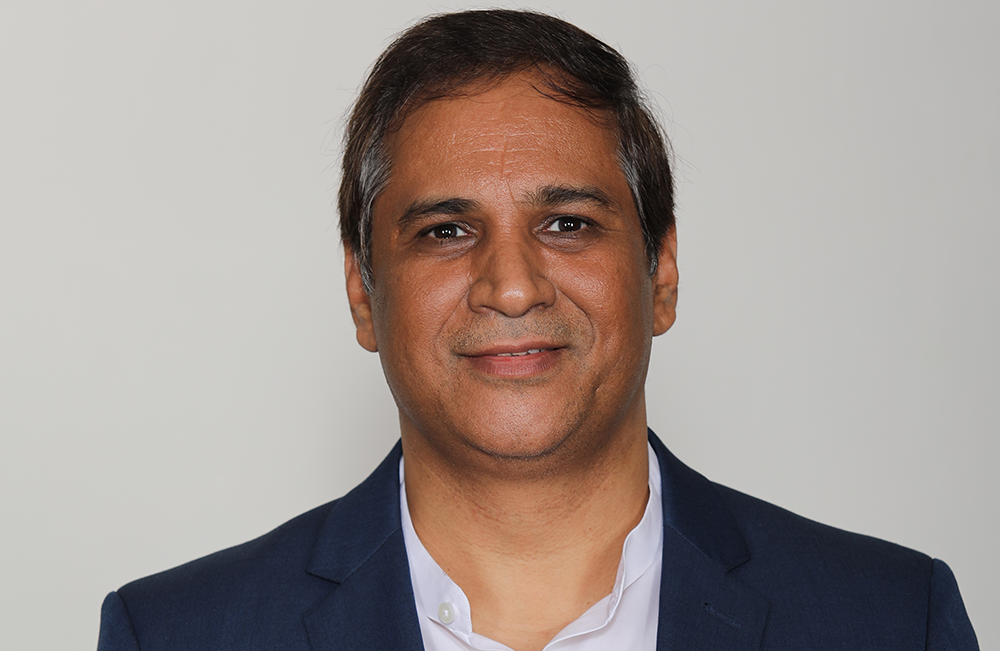Enabling impact led investments in emerging markets with Vineet Rai
Vineet Rai, Founder and Chairman of Aavishkaar Group, has an ambitious goal, for mainstream finance to remake itself in the image of impact investing.
“Impact investing right now is the tail of the big mainstream dog,” says Vineet who joined CDC for an Insight event on enabling impact led investments in emerging markets.
“But we want the dog to also become impact. So, we don’t want impact investing to change, we want the mainstream to change.”
Vineet is no stranger to ambitious goals. Recognising the funding gap for entrepreneurs in rural India he came to impact investing by looking for investment capital willing to take on the risk to invest in start-up businesses which “solve real problems”.
“At that point in time I defined impact as ‘making the poor rich’, it was a very naïve definition,” he says.
He quickly learnt that just finding capital was not enough. Offering only one investment product was insufficient to meet the needs of rural entrepreneurs, there needed to be an ‘ecosystem’ created that includes different types of capital, integrated technology, and human talent.
You can watch a recording of the event here
He also believes it’s necessary to bridge the gap between investors and entrepreneurs, who he sees as speaking ‘different languages’. That’s why he’s played a role in establishing forums to bring them together, alongside governments, to create scale.
There is also a missing understanding from mainstream investors, he says, that when entrepreneurs are trying to solve large complex social problems it takes time.
“You are actually trying to build an enterprise in a broken ecosystem. That is very different from a Silicon Valley ecosystem where capital, talent, competitive entrepreneurship, all stand shoulder-to-shoulder. When I go to a low-income state there is no capital, there is a skills gap, but there is also an entrepreneur who is trying to solve a problem. There are all kinds of challenges, the growth rate takes time to come through and that requires patience.
“So, I think it is less of a discussion about ‘when I do impact investing, do I get low returns?’ It is about taking a longer time to generate returns.”
But change is happening. Vineet says that in India, while mainstream investing is undeniably dominant, the distinction between the traditional allocation of capital and impact investing is beginning to blur.
“We have been able to bridge the divide between impact investors and mainstream investors”, he says.
“Today if you look at Aavishkaar’s portfolio companies and you ask who my follow-on investors are, they are the mainstream guys. The reason is that there is a belief amongst tech investors and mainstream investors that to solve complex social problems, for example financial inclusion, you need to have an element of innovation, technology and scale. And these make it an attractive opportunity.”
It is this recognition of opportunity that is yet to gain traction in other markets, he argues.
However, there is still a problem in getting capital to entrepreneurs. While mainstream finance will happily back a proven business model which creates impact and demonstrates returns, few want to identify early-stage businesses they can build into a successful company. When they do invest, however, they provide access to capital and knowledge which can enhance both impact and financial returns.
Bringing Jen Braswell, CDC’s Head of Value Creation Strategies, to the discussion, event chair Colin Buckley asked about the value of impact investors having ‘specialist areas’ such as gender.
Jen suggests that investing with ‘specific lenses’ to solve identified challenges, enables investors to deliver a greater level and scale of impact than they would otherwise. They can assign metrics to investments and get a greater understanding of how their capital is used.
“We can refine the way that we invest, the mechanisms by which we make our investment decisions, and importantly the way that we interact with and support our portfolio businesses post-investment, to ensure they are making the decisions that will produce the outcomes and the solutions to the problems we’re trying to collectively solve,” she says.
At the same time there must be a balance on what we ask of impact investors, Vineet adds. If we want to convert more mainstream financiers to impact investing, we should keep the ‘bar low’ and then raise it as the industry grows and becomes the norm.
However, he is optimistic that this will happen and that, despite the challenges, the world will meet the 2030 deadline for the UN’s Sustainable Development Goals.
“Since the time homo sapiens started walking straight we have never seen a world without hunger, without poverty, without inequity”, he says.
“We have a resolution that 193 governments of the world signed and I think if impact investing can put all its power behind this idea – every leader on impact holds themselves personally accountable – you have the power to change the world in next 10 years. I think the world will change by 2030.”
This article is based on discussions at our recent event ‘Enabling impact led investments in emerging markets with Vineet Rai‘, part of our Insight event series. You can listen to the podcast of this event below or find recordings of all our Insight events here.










